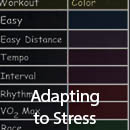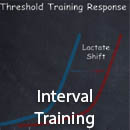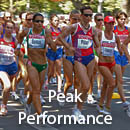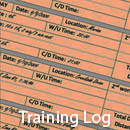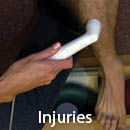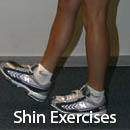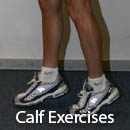Race Walking Training
Interval Training - Tempo Workouts
The tempo workout is the first workout for which you race walk at a significantly fast pace. Each week of the mini-cycle contains one tempo day. From week to week within the mini-cycle, the tempo workouts get slightly longer, while your race walking pace remains about the same. The added mileage results in the increased workload. Then, after each mini-cycle, the race walking pace increases and your mileage reduces back to the original distance specified at the cycle’s start. This helps your body adapt to the new pace as you increase distance. By reverting back to the shorter distance, your body is able to handle the new intensity.
Tempo walks are a great way to raise your lactate threshold, but they are very difficult workouts and must be done properly to reap full benefit. Failure to walk at the proper pace leads to training the wrong energy systems, thus throwing off the training program’s balance.
While you should always warm up before working out, when you race walk a tempo workout you really must make sure you warm up properly. To save space, the training schedule omits specific warm-up drills, but you should perform at least the drills with high importance. If time permits, perform the additional ones. After you complete these exercises, race walk one mile at your easy distance pace, using good technique. After the mile, stretch any tight spots or chronically sore areas..
Properly warmed up, try to complete the tempo walk at a relatively constant pace, without stopping. Variance in your pace is acceptable if you start slower and finish a little faster than the recommended pace. When race walking a tempo workout, make sure you still can utter a few words, but have difficulty holding a conversation. Once finished, you must take the time to warm down. Walk another mile at easy distance pace and then stretch thoroughly.

Do not start a tempo workout fast and slow down.
![]()
If you have a watch that stores splits, record them at regular intervals, such as each lap on a track. If you walk on a measured road course, record your time at the locations most convenient to consistently grabbing splits. Splits are important, because walking at a consistent pace or one that slowly speeds up provides more benefits than starting quickly and slowing down. Starting too quickly leads you to use the wrong energy systems, thus eliminating the workout’s full benefit. To simulate your target racecourse experience, measure out a 2K or 2.5K loop when you train on the road. The best way to measure a loop is with a wheel, a car odometer is not accurate enough.









